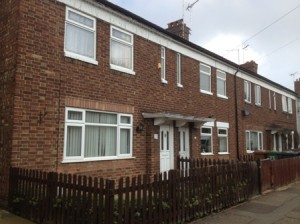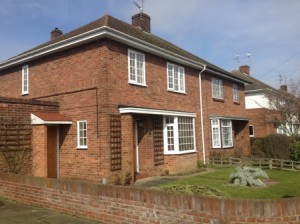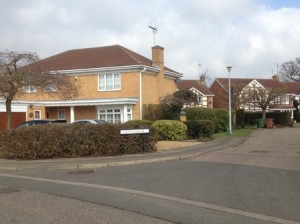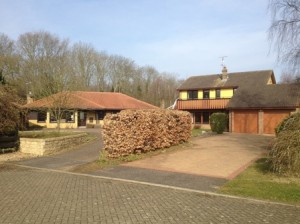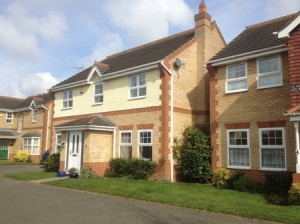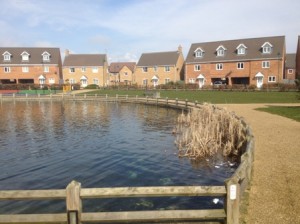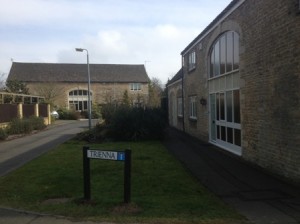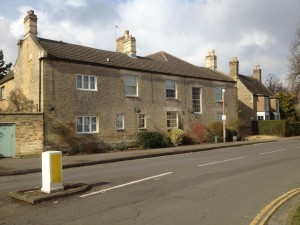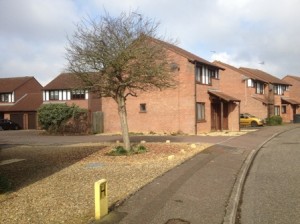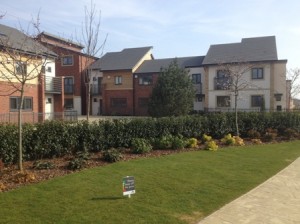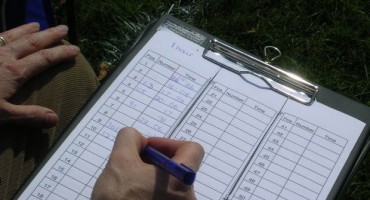Securing a detailed understanding of property conditions in Peterborough requires the unparalleled local expertise of Homesurv’s surveyors. With their in-depth knowledge and practical experience spanning over two decades, Homesurv offers a critical advantage in real estate due diligence. This guide explains the nuanced roles of different surveyors, the reasons for their necessity, and the exclusive benefits they offer, particularly in Peterborough’s varied property landscape.
1. The Importance of Homesurv’s Surveying in Peterborough
In the evolving urban tapestry of Peterborough, with its blend of historical and contemporary architectures, the expertise of Homesurv’s local surveyors is indispensable. Whether assessing the viability of a classic 1980s home in Bretton or a charming residence in the historic borough of Longthorpe, Homesurv’s professional surveyors provide crucial insights into both the condition and the fiscal health of properties. They employ their detailed local knowledge to evaluate potential property issues unique to Peterborough, including those relating to the town’s specific geological makeup.
2. Expert Analysis: Building Surveyors vs. Property Surveyors by Homesurv
Building Surveyors Peterborough by Homesurv
Homesurv’s building surveyors offer a profound level of structural analysis, preparing thorough reports that highlight concerns ranging from the integrity of materials used to potential legal compliance issues. For property renovations or commercial evaluations in Peterborough, Homesurv’s surveyors are equipped to provide the guidance you need to make informed decisions.
Property Surveyors Peterborough by Homesurv
Conversely, Homesurv’s property surveyors are adept in the financial and transactional realms, delivering accurate market valuations and offering counsel on investment prospects. Their services are an asset to those engaged in buying or selling property in the region, guaranteeing that you have the most current and relevant property information at your disposal.
3. The Benefits of Choosing Homesurv’s Peterborough Expertise
Unrivalled Local Knowledge
Leveraging over 25 years of experience, Homesurv’s surveyors bring a critical depth of local insight to Peterborough’s property market. Their acute understanding of the area’s heritage, along with its new developments, informs each survey, yielding detailed and region-specific advice.
Comprehensive Service Range
Homesurv’s versatile services are a testament to their surveyors’ comprehensive skill set, encompassing everything from homebuyer reports to full structural surveys. This adaptability ensures that every Peterborough property’s unique attributes are thoroughly and expertly assessed.
Tailored Problem-Solving
Recognising that Peterborough’s concerns may differ from other regions, such as issues not related to mining but perhaps to clay subsidence or flooding, Homesurv’s surveyors apply their localised knowledge to offer bespoke solutions. They provide not only analysis and reporting but also problem-solving strategies to pre-empt or address property-specific concerns effectively.
Homesurv’s surveyors are more than a simple choice; they are the standard-bearers for informed property evaluations in Peterborough. By choosing Homesurv, you gain access to a level of expertise that ensures peace of mind and strategic advantage, whether you’re a homeowner, buyer, or investor. The investment in a Homesurv survey is an investment in certainty and the safeguarding of your property interests in Peterborough. As Chartered Surveyors (RICS) and Registered Valuers, we have carried out Residential Valuations, Building Surveys (formerly known as a Structural Survey) and RICS Homebuyer Surveys (commonly referred to as a Homebuyer Report) in Peterborough and Oundle for over 15 years.
Housing In Peterborough
Peterborough lies at the extreme western edge of the East Anglia fens and the local topography is flat and low-lying with some places below sea level. Human settlement dates back to the Bronze age. The population grew rapidly following the arrival of the railways in the 19th century and became a centre for brick manufacturing.
Peterborough lies at the extreme western edge of the East Anglia fens and the local topography is flat and low-lying with some places below sea level. Human settlement dates back to the Bronze age. The population grew rapidly following the arrival of the railways in the 19th century and became a centre for brick manufacturing.
After the First World War, Peterborough City Council began building ‘homes fit for heroes’ – council housing for working people, which increased growth in the city. Throughout the 20th century, the city expanded to incorporate many places such as Walton, Newark and Fletton, which had formerly been entirely separate villages.
Growth was then limited until it was designated a new town in 1967. Peterborough Development Corporation together with the city and local council developed new townships for the London overspill. These were Bretton, the Ortons, Paston, Werrington and the most recent Hampton.
Bretton was created as the City’s first township and much of the property was constructed in the 1970s. These were a mix of both private and PDC housing. To the west of Bretton is an area of private housing constructed in the 1980s. Orton was the second township to be constructed after Bretton and comprises of the ancient villages of Orton Waterville and Orton Longueville, together with the newer developments of Orton Brimbles, Orton Goldhay, Orton Melbourne, Orton Southgate, Orton Wistow and most recently Orton Northgate.
Orton Goldhay’s housing development was laid out in the 1970s by PDC and was the second township to be developed.
Orton Wistow is an area of privately developed housing originally laid out in the 1980s and completed in the early 1990s.
The latest part of the Ortons is Orton Northgate and is the fastest growing and has the most recently constructed housing. This area previously formed part of the East of England Showground site and a number of properties have the benefit of overlooking the remaining parts.
Hampton was a former site of the brick pits and was also used for the storage of household waste. It was later filled in with pulverised fly ash.
Orton Brimbles is an area of mixed public and private sector housing dating almost entirely from the 1980s. Until the 1960’s Orton Longueville was a village separated from Peterborough by open farmland.
Longthorpe is a village in the City of Peterborough and is one of the most popular areas to live containing properties of varying age and style. Thorpe Hall in Longthorpe is a grade 1 listed building. There are also a number of other listed buildings including the Old Manor House.
Originally Werrington was a village and was engulfed in the mid-twentieth century as the city expanded. There are two distinct areas of Werrington, the village and new Werrington.
Property Issues In Peterborough
Peterborough is not within the coalfields and, therefore, there are no problems with ground stability caused by coal mining past or present. There are areas of shrinkable clays and in some locations leaving the properties vulnerable to subsidence. This can also be exacerbated by dense tree planting. Trees and shrubs take large amounts of water out of the ground causing clay subsoils to shrink. These tend to be isolated issues and are not widespread. However, a Homebuyer Survey or Building Survey will advise you of any past or present subsidence issues.
A common cause of movement in property is defective drains particularly experienced again in an older property. As most of Peterborough consists of modern property this is not a widespread problem.
In summary, most houses can be susceptible to some form of movement whether it be initial shrinkage and settlement for more serious forms such as subsidence. It is the purpose of the Building Survey or Homebuyer Report to identify any form of movement and to determine whether it is an ongoing serious problem.
Given the low-lying ground levels it’s not surprising parts of Peterborough have been flooded in the past but there are no recently recorded problems.
Types Of Construction In Peterborough
Most properties in Peterborough are of traditional masonry construction. Since the early 1970s, a significant number of timber-framed properties have been constructed by both the Peterborough Development Corporation and private construction companies. Homebuyer Reports are suitable for both types of construction. There are a few properties of non-traditional construction. These are mainly in Paston where a number of houses built by the Peterborough Development Corporation are of Cast in-situ concrete. Homebuyer reports are unsuitable for non-traditional forms of housing and if you are considering buying one then you will need a Building Survey.
A new development of low energy houses is being built near the football ground. These are constructed to the 2015 Building regulations and have additional wall insulation, low air leakage and ventilation systems that incorporate heat recovery equipment.
Homesurv Ltd’s Coverage Of Peterborough
Homesurv has undertaken Homebuyer Reports and Building Surveys in Peterborough for over 15 years.
We cover post codes PE1, PE2, PE3, PE4, PE5, PE6, PE7 and PE8.
- PE1 – Dogsthorpe, Eastfield, Eastgate, Fengate, Millfield, Newark, New England, Parnwell
- PE2 – Fletton, The Ortons, Stanground
- PE3 – Bretton, Longthorpe, Netherton, Ravensthorpe
- PE4 – Gunthorpe, Paston, Walton
- PE5 – Castor and Ailsworth
- PE6 – Deepings, Thorney and Eye
- PE7 – The Hamptons and Cardea
- PE8 – Oundle and surrounding Villages



